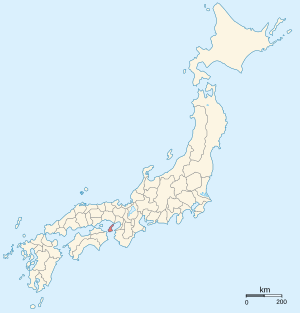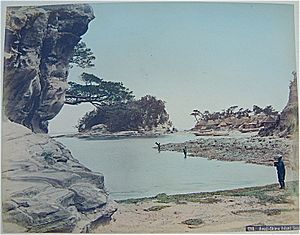Awaji Province facts for kids

Awaji Province (淡路国, Awaji-no kuni, formerly 淡道) was an important island area in old Japan. It was like a special region or state. You can find Awaji Island in the Seto Inland Sea, which is a body of water between Japan's main islands.
This island is located between Honshu, the biggest island of Japan, and Shikoku. The name Awaji actually means "Road to Awa." This is because it was a common path for people traveling from central Japan to a place called Awa Province. Sometimes, people also called it Tanshu (淡州).
Contents
History of Awaji Province
Awaji Province has a long history. One interesting event happened in the year 764. A former ruler of Japan, known as Emperor Junnin, was sent to live on Awaji Island. This was a form of punishment called exile, meaning he had to leave the capital and live somewhere else. He passed away on the island in 765. After his death, he was sometimes called Awaji no Haitei.
Changes in Japan's Provinces
Many years later, during the Meiji period (which started in 1868), Japan went through big changes. The old system of provinces, like Awaji, was updated. These provinces were changed into new areas called prefectures. This happened in the 1870s, and it changed how Japan was organized on maps.
Shrines and Temples
Awaji Province was also home to important religious sites. The main Shinto shrine for the province was called Izanagi jinja. A chief Shinto shrine is known as an ichinomiya, which means it was the most important shrine in that area.
Related pages
See also
 In Spanish: Provincia de Awaji para niños
In Spanish: Provincia de Awaji para niños


